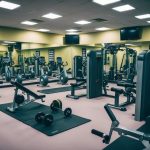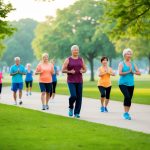
Nutrition and Hydration

Proper nutrition and adequate hydration are essential for maximizing fitness results. Tailoring a meal plan to personal goals helps ensure balanced intake of nutrients while maintaining sufficient hydration supports energy levels and recovery.
Understanding Nutritional Needs
Individual nutritional needs vary based on specific fitness goals, body type, and activity level. Those aiming to build muscle may focus on higher protein intake, incorporating lean meats, beans, and dairy. Someone aiming for weight loss might prioritize whole grains and vegetables for fiber and nutrients.
It’s important to ensure a balanced diet that includes a mix of macronutrients: carbohydrates provide energy, proteins support muscle repair, and fats aid in nutrient absorption. Caloric intake should align with activity level to support energy demands without excess that might lead to weight gain. Consulting a nutritionist can help craft a tailored meal plan, making meal prep easier and goals more attainable.
Stay Hydrated
Hydration plays a crucial role in physical performance and recovery. Individuals should aim to drink sufficient water throughout the day to replace fluids lost through sweat during exercise. Dehydration can lead to fatigue and hinder progress.
It is recommended to drink about 8 cups of water daily, adjusting based on personal needs and workout intensity. Electrolyte-rich drinks can be beneficial during prolonged or intense exercise sessions to replenish sodium and potassium levels. Monitoring urine color can provide an indicator of hydration status, with pale yellow typically suggesting adequate hydration. Staying consistent with daily hydration aids in maintaining optimal physical function and helps avoid potentially harmful effects of dehydration.
Workout Components
A well-rounded fitness program includes key components such as effective warm-up routines, the main workout principles, and cooling down with stretching, each vital for achieving fitness goals.
Effective Warm-Up Routines
A proper warm-up routine gradually prepares the body for the physical demands of a workout. It should start with light cardiovascular exercises, such as jogging or jumping jacks, to increase the heart rate and promote circulation. This helps oxygen flow to muscles, reducing injury risks. Following the cardiovascular activity, dynamic stretches are important. Movements like arm circles or leg swings improve flexibility and range of motion. These exercises are crucial for activating the muscles and joints used during the main workout. By increasing body temperature and flexibility, warm-ups enhance performance and prepare the individual both mentally and physically for the main workout session.
Main Workout Principles
The main workout focuses on achieving specific fitness goals, whether it’s building strength, improving endurance, or increasing flexibility. Key principles include proper form and technique, essential to prevent injuries and ensure effectiveness. Each exercise targets specific muscle groups, and maintaining correct posture is crucial. Adjusting workout intensity is also a major aspect, involving modifications in weight, repetitions, or resistance levels tailored to individual fitness levels. Rest and recovery between workout sets are equally important, serving as opportunities for muscles to rejuvenate and grow. This balance of intensity and rest helps in maximizing benefits, making the workout both challenging and achievable.



